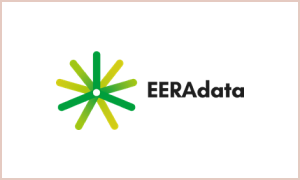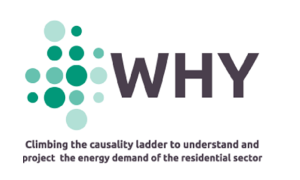
EERAdata aims to accelerate the implementation of the “Energy Efficiency first” principle across Europe by supporting policy-makers to effectively assess the impacts of Energy Efficiency (EE) investments, with an initial focus on investments in buildings, in order to achieve a highly energy efficient and decarbonised building stock.
EERAdata brings together researchers, energy agencies and municipalities from 6 EU countries who will collaborate for two and a half years to inform investment decisions and improve energy efficiency in buildings.
This project has received funding from the European Union’s Horizon 2020 research and innovation programme under grant agreement No 847101.

Efficiency First is the fundamental principle applied to policymaking, planning, and investment in the energy sector, around which the EU’s energy system should be designed.
It means considering the potential value of investing in efficiency (including energy savings and demand-response) in all decisions about energy system development – be that in homes, offices, industry, or mobility.
Where efficiency improvements are shown to be most cost-effective or valuable, taking full account of their co-benefits, they should be prioritized over any investment in new power generation, grids or pipelines, and fuel supplies. Enefirst help make the E1st principle more concrete and operational, better understand its relevance for energy demand and supply and its broader impacts across sector and markets, focusing on the building sector. The project provides a clear definition of E1st, understand its value for the energy system, develops policy proposals, and tests those in specific cases.

Driven by the expansion of renewable generation capacity and the progressing electrification of other energy sectors, the electrical grid increasingly faces new challenges: fluctuating supply of renewable energy and simultaneously a changing demand pattern caused by sector coupling. However, the integration of non-electric sectors such as gas, heat and e-mobility enables more flexibility options. This project aims to investigate the effects of sector coupling on the electrical grid and the benefits of new flexibility options. Like the previous project open_eGo, this work will follow the open-source and open-data principles.

In order to mitigate climate change effects, urgent action is required in all sectors of the economy to significantly reduce greenhouse gases emission. Energy System Models (ESM) are tools that help energy analysts, planners and policy makers to rationally describe energy systems and systematically evaluate the impacts of long-term scenarios. The WHY project develops innovative methodologies and a toolkit for short and long-term household energy consumption modelling. Use cases benchmark these models ranging from local to European-wide energy grids. The WHY Toolkit builds on the causality chain to model the energy demand, building on associations between measurable variables.

The Odyssee-Mure project is co-ordinated by ADEME with the technical support of Enerdata and Fraunhofer. It is supported by H2020 programme of the European Commission and is part of the activity of the EnR Club.
The general objective of the project is to provide a comprehensive monitoring of energy consumption and efficiency trends as well as an evaluation of energy efficiency policy measures by sector for EU countries, Norway, Serbia, Switzerland and the United Kingdom:
Evaluate and compare energy efficiency progress by sector, and relate this progress to the observed trends in energy consumption.
Contribute to the evaluation of national energy efficiency policy measures and analyse their dynamics of implementation.
To provide results in an interactive and attractive way to decision makers and actors involved in energy efficiency, the project has developed specific data and policy tools. The originality of the project is to cover all sectors and end-uses with an homogeneous and harmonised approach and to provide an overall picture of the trends and measures by sector.


